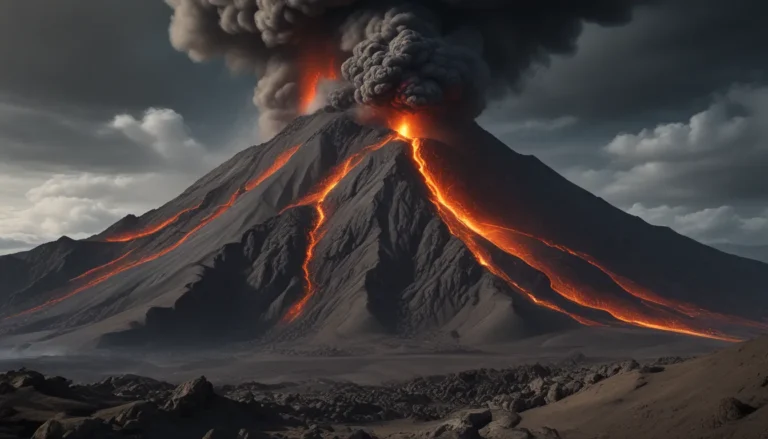A Note About Images: The images used in our articles are for illustration purposes only and may not exactly match the content. They are meant to engage readers, but the text should be relied upon for accurate information.
The Earth’s dynamic crust is a canvas painted with geological wonders known as fault zones. These intriguing features arise from tectonic plate movements and shape our planet’s surface in profound ways. From triggering earthquakes to influencing volcanic activity, fault zones are key players in Earth’s ever-changing landscape. In this article, we will explore 16 captivating facts about fault zones, shedding light on their formation, significance, and impact on the environment.
Understanding Fault Zones: The Basics
Fault zones are regions where rocks on either side of a geological fault have shifted relative to each other due to tectonic plate movements. These areas can vary in size from a few meters to several hundred kilometers. The interactions between tectonic plates generate stress along fault lines, eventually leading to ruptures and seismic events.
Exploring the World of Fault Zones
-
Formation of Fault Zones: Fault zones are a product of the intense forces exerted by tectonic plate movements. The San Andreas Fault in California, stretching 800 miles, serves as a famous example of a boundary between the Pacific Plate and the North American Plate.
-
Length and Diversity: Fault zones come in various sizes, ranging from a few kilometers to over 5,000 kilometers. The Great Rift Valley in East Africa showcases the impressive scale of these geological features.
-
Underwater Fault Zones: Fault zones are not restricted to land. The Mid-Atlantic Ridge is an underwater fault zone where the Eurasian Plate and North American Plate diverge, creating new crust along the ocean floor.
-
Tectonic Plate Interactions: Fault zones play a crucial role in generating earthquakes, with significant seismic events often occurring along these zones. For instance, the 9.5-magnitude earthquake in Chile in 1960 stands as a testament to the immense energy released along fault lines.
The Influence of Fault Zones on Geology and Environment
-
Types of Faults: Fault zones can be classified into various types, including strike-slip faults and thrust faults. These classifications highlight the diverse mechanisms through which tectonic forces shape the Earth’s crust.
-
Volcanic Activity: Fault zones intersecting with magma chambers can create pathways for molten rock, leading to volcanic eruptions. The influence of fault zones extends beyond seismic events to include volcanic phenomena.
-
Mineral Deposits: The movement of tectonic plates along fault lines can concentrate valuable mineral deposits such as gold, silver, and copper. Fault zones play a crucial role in the formation of mineral resources essential for various industries.
-
Geological Landscapes: Fault zones contribute to the creation of dramatic landscapes through processes like mountain uplift and valley formation. The Ring of Fire, encircling the Pacific Ocean, exemplifies the impact of fault zones on shaping landforms.
Preparedness and Mitigation Strategies for Earthquakes
-
Identification and Monitoring: Geologists use geological surveys and mapping techniques to identify and monitor fault zones. This information is vital for assessing earthquake hazards and implementing mitigation strategies.
-
Periods of Activity: Fault zones can experience periods of activity and quiescence, posing challenges for predicting seismic events. Understanding the cyclical nature of fault activity is crucial for earthquake preparedness.
-
The Role of Public Awareness: Public education and early warning systems are essential components of earthquake preparedness. By raising awareness about fault zones and seismic risks, communities can enhance their resilience to earthquakes.
Conclusion: Navigating the World of Fault Zones
In conclusion, fault zones are captivating geological features that offer a window into Earth’s dynamic processes. From the formation of mountains to the occurrence of earthquakes, fault zones shape our planet in profound ways. By studying these phenomena, scientists can gain insights into tectonic activity and develop strategies to mitigate earthquake impacts.
Embark on a journey of discovery as you unravel the mysteries of fault zones. The intricate dance of tectonic forces beneath our feet reveals the interconnectedness of Earth’s geology and the importance of understanding fault zones for safeguarding lives and infrastructure.
FAQs
-
What is a fault zone?
A fault zone is a region where rocks on either side of a geological fault have moved relative to each other due to tectonic plate movements. -
How are fault zones formed?
Fault zones are formed when stress builds up along tectonic plate boundaries, leading to movement and ruptures along fault lines. -
Can fault zones cause earthquakes?
Yes, fault zones are known for causing earthquakes when stress along the fault line is released, generating seismic waves. -
Are fault zones dangerous?
Fault zones can be dangerous due to their association with seismic activity, posing risks to human lives and infrastructure. -
How do scientists study fault zones?
Scientists study fault zones using geological mapping, geophysical surveys, and seismic monitoring to gain insights into tectonic processes.
Unlock the secrets of fault zones as you delve into the fascinating world of Earth’s dynamic geology. Join us in exploring the wonders of fault zones and the profound impacts they have on our planet.






